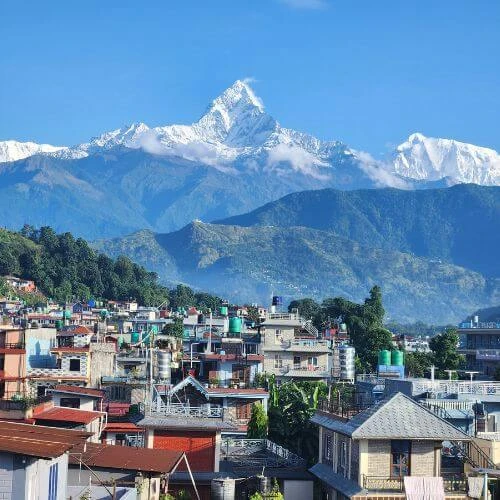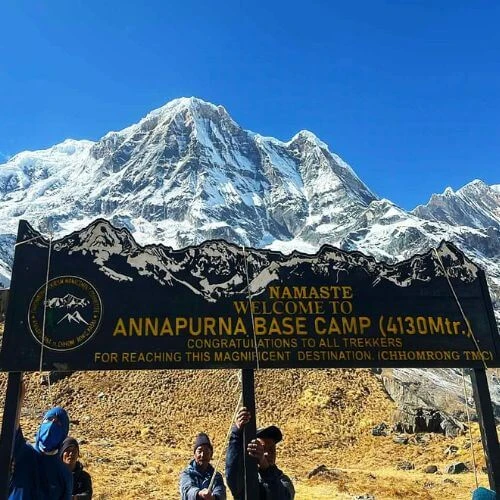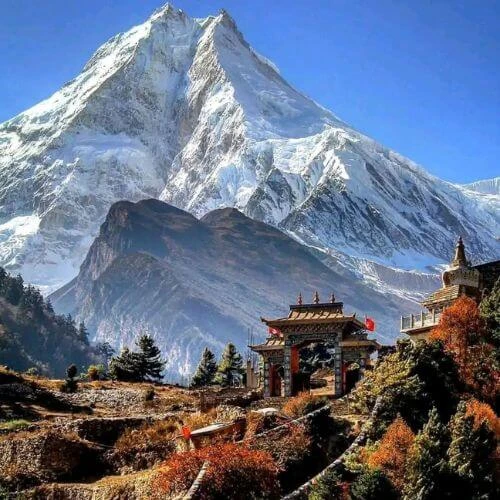How Hard is the Kailash Masarovar Yatra?
The Kailash Mansarovar Yatra is one of the world's most challenging pilgrimages. Furthermore, Kailash Mansarovar has a very difficult elevation and demands extremely high levels of mental resolve and physical fitness. Additionally, it takes place on a geographical altitude starting from 4,500 meters to 5,800 meters above sea level, where the levels of oxygen are much lesser compared to what most people are adapted to. During Kailash tours, the pilgrims have to walk along extreme pathways, steep rocky lanes, and unpredictable mountains.
High altitude sickness is one of the main problems highlighting the Kailash Mansarovar Trek difficulty. Severe headaches, nausea, dizziness, and extreme fatigue are among the various symptoms that tourists are likely to experience while traveling through the Himalayan region. Even those who are physically fit may find the thin air to be too much to handle. Some pilgrims may require careful acclimatization because severe disorders like HAPE or HACE might develop and are potentially fatal if left untreated. The Kailash Tour difficulty is a very demanding pilgrimage, ranking between 8 and 9 on a difficulty scale of 1 to 10. It is only appropriate for people who are in very good physical shape, have a strong will to succeed, and have done high-altitude trekking before.

Which is more difficult Inner Kora or Outer Kora in Kailash Mansarovar Yatra
Kailash Mansarovar Yatra is a pilgrimage that has been made reverently for Mount Kailash, an important mountain in Tibet, considered to be the spiritual junction of Hindus, Buddhists, Jains, and Bon. There are two main routes: the Outer Kora and the Inner Kora, each with its unique challenges and deep spiritual meaning. The Outer Kora is the more popular route and covers about 52 kilometers, usually completed in three days. Though considered the easier option, it is still physically demanding. For high altitudes, pilgrims trek on rugged terrain that varies from 4,700 to 5,600 meters. The most difficult stretch of this route is the crossing of Dolma La Pass, which is 5,636 meters high. There are steep ascents and rocky paths, not forgetting the harsh weather conditions are a test of human endurance.
While the Inner Kora is a much harder task, which is taken up by the advanced and more physically fit pilgrims, the path is taken closer to the base of Mount Kailash, for which higher skills of trekking and mountaineering are needed. The pilgrims cross steep mountain slopes along narrow paths, extremely rugged in some areas, where there are certain areas demanding technical climbing with a small scope for any kind of error.
The Outer Kora is more accessible for most pilgrims but equally demanding. It requires good physical fitness to endure the high altitude, steep ascents, and rocky terrain. The 52-kilometer route is completed over three days, crossing Dolma La Pass, the highest point of the trek at 5,636 meters. This pass is physically demanding due to its steep incline and unpredictable weather; however, it is manageable for those prepared for the trek.
The Inner Kora, however, is far more demanding and is recommended only for highly experienced trekkers. This route requires advanced mountaineering skills and exceptional fitness highlighting the Kailash Mansarovar Yatra Difficulties. The pilgrims are faced with narrow paths hugging steep mountain slopes, unstable ground, and parts that demand technical climbing. The journey takes participants closer to the base of Mount Kailash, adding a spiritual intensity but also significantly increasing the physical challenges.
The environmental conditions in the Inner Kora are much harsher. Pilgrims face rapidly changing weather, including snow and ice, with limited infrastructure for support. The route has minimal access to medical care or emergency evacuation, making it far riskier than the Outer Kora. While the Outer Kora is difficult, the Inner Kora pushes physical and mental limits to an entirely different level, requiring careful planning and preparation.

What are the risks of Kailash Mansarovar Yatra?
Altitude Sickness
Traveling by the Kailash Mansarovar route exposes pilgrims to altitudes as high as 4,500 to 5,600 meters above sea level, where altitude sickness is often expected. This reduced oxygen level usually results in headaches, dizziness, nausea, fatigue, and, in worst cases, life-threatening HAPE or HACE conditions. Most of them have severe breathing problems, extreme tiredness, and a reduction in mental clarity. The main challenge of the Kailash Mansarovar Yatra lies in managing these altitude-related risks. Gradual ascent along with proper acclimatization and preventive medications helps manage such risks.
Unpredictable Weather
The weather around Kailash in the Himalayas changes very fast and unpredictably. The mornings may be warm and sunny, with snowstorms or heavy rains following in a few hours. The temperatures vary from 20°C during the day to -10°C at night. Strong winds, sometimes reaching 50–60 km/hour, add to the challenges and may block mountain passes. Travelers should pack clothes that can be worn in layers and equipment adaptable to such sudden changes.
Limited healthcare facilities
Healthcare facilities along the way in Kailash Mansarovar are minimal. There are no advanced medical facilities, specialist doctors, and emergency services available in high-altitude mountainous regions. Major hospitals are several hundred kilometers away. The pilgrims should carry medical kits, and the required medicines, and also be prepared to deal with health emergencies themselves or arrange for evacuation. Satellite phones or emergency communication gadgets are a must to remain connected in case of such crises.
Difficult Terrain
The route consists of steep and rocky paths, narrow trails, and high-altitude passes such as Dolma La at 5,636 meters. Trekkers make their way across loose gravel, boulders, snow patches, and poorly defined paths that demand physical fitness and mental endurance. Proper trekking equipment, including sturdy boots and trekking poles, is critical to keep balance and rhythm.

Basic Accommodation
Accommodation during the Kailash Mansarovar Yatra is very basic. Trekkers need to stay in low-budget guesthouses, temporary tents, or monastery dormitories with very minimum facilities. The rooms generally do not have any heating, and the bathroom is usually shared. There is no guarantee of electricity. Travelers should carry sleeping bags and sufficient warm clothing and be prepared for such basic living conditions.
Fitness Level Required for Kailash Mansarovar Yatra
The Kailash Mansarovar Yatra is a pilgrimage that requires the pilgrims to be in the best physical condition. They must be ready for trekking 6-8 hours every day through strenuous terrain, sometimes even at extreme altitudes ranging from 4,500 to 5,600 meters. The journey needs one to have strong cardiovascular efficiency, strong leg muscles, and the ability to navigate steep, rocky paths with limited oxygen. Given these challenges, is the Kailash Mansarovar Yatra difficult? Yes, it is. One must obtain a comprehensive medical fitness certificate, ensuring that blood pressure, diabetes, and health, in general, remain stable and well-managed.
Pilgrims should be able to walk 10-15 kilometers without extreme fatigue. For this, one needs a well-trained cardiovascular system that is capable of coping with a low-oxygen environment. Regular cardio exercises like running, cycling, and swimming are crucial for preparation.
It is similarly essential to develop the strength of your core and legs. The trekkers must walk for hours on irregular tracks, climb steep mountain passes, and sustain energy levels under extreme conditions. Strength training for the legs and core stability plays a key role in readiness.
Beyond physical fitness, mental preparation is also vital. Pilgrims must learn to remain calm during difficult situations, follow whatever instructions guides give them, and maintain a positive attitude during the entire journey. Mental toughness and adaptability are as important as physical strength to complete this spiritual adventure with success.

Preventing Altitude Sickness during Kailash Mansarovar Yatra
Physical Preparation and Fitness
Preparing your body for the challenging terrain of the Kailash Mansarovar Yatra begins months before the actual journey. A comprehensive fitness training program is crucial to build the stamina and endurance required for high-altitude trekking. Cardiovascular exercises play a pivotal role in conditioning your body to perform under reduced oxygen conditions. Experts recommend a mix of walking, hiking, swimming, and cycling to improve overall fitness. The goal is to gradually increase your endurance and strengthen your cardiovascular system, which will help your body adapt more efficiently to the Kailash Mansarovar altitude challenge.
Acclimatization Strategy
Acclimatization is perhaps the most critical aspect of preventing altitude sickness. The human body needs time to adapt to lower oxygen levels and reduced atmospheric pressure. Travelers should follow a methodical approach of slow ascent, typically limiting elevation gain to 300-500 meters per day. This means spending 1-2 days at intermediate altitudes to allow your body to adjust.
Medical Preparation and Consultation
A thorough medical consultation before the journey is imperative. Travelers should undergo a comprehensive health check-up to assess their fitness for high-altitude travel. Physicians can provide personalized advice, prescribe preventive medications like Acetazolamide (commonly known as Diamox), and help you understand your body's potential vulnerabilities. Acetazolamide helps prevent and reduce the symptoms of altitude sickness by assisting your body in acclimatizing more quickly. It typically starts 1-2 days before ascending and continues during the initial stages of high-altitude travel. Additionally, travelers should ensure they have all necessary vaccinations and health certificates for the journey.
Hydration and Nutrition Management
Proper hydration and nutrition are fundamental to preventing altitude sickness. The body loses water more rapidly at high altitudes, and the risk of dehydration increases significantly. Travelers should aim to drink 3-4 liters of water daily, consuming fluids consistently even when not feeling thirsty. Electrolyte-rich drinks can help maintain proper mineral balance.
Dietary choices are equally important. Light, easily digestible meals that are high in carbohydrates are recommended. Small, frequent meals help maintain energy levels and reduce the risk of altitude-related digestive issues. It's crucial to avoid alcohol and minimize caffeine intake, as these can contribute to dehydration and interfere with the body's acclimatization process.

Mental Preparation and Flexibility
Mental preparedness is as important as physical preparation. The journey to Kailash Mansarovar is as much a mental challenge as a physical one. Travelers should practice deep breathing techniques, maintain a positive attitude, and be psychologically prepared to modify or even cancel their plans if health becomes a concern. Flexibility is key – the ultimate goal is the safe completion of the pilgrimage, not pushing beyond personal limits. Staying calm, listening to experienced guides, and prioritizing personal well-being can make a significant difference in managing the challenges of high-altitude travel.
What is the Age Limit for Kailash Mansarovar Yatra?
The Kailash Mansarovar Yatra has age limits so that the safety of those participating in this challenging spiritual journey can be ensured. Normally, the participants should be within the age group of 18 to 70 years. The minimum age of 18 years ensures that travelers are physically and mentally prepared for the demanding conditions of the trip.
Because it involves some tough mountain terrain and a high altitude reaching about 15,000 feet, the maximum age limit set for the journey is 70. Such conditions do indeed require good physical health, which might be harder to keep as one gets older.
Conclusion
Kailash Mansarovar Yatra is a unique pilgrimage that pushes people beyond their usual limits. This challenges not only physical strength but also emotional and spiritual resistance, which requires preparation and determination in a balanced manner. The difficulty level of the Kailash Mansarovar Yatra is high because of its rugged terrain and high-altitude conditions, and strong fitness with mental stamina is required to go on it.
This sacred journey highlights human determination. It requires a careful plan, good physical fitness, and a strong mental focus. Walking the path to Mount Kailash is more than a trek; it is an experience in building inner strength and deepening spiritual connection.
The Yatra is for those who are up for the challenge, as it provides them with an opportunity to experience personal limits, tap into ancient spiritual traditions, and feel truly accomplished.

Frequently asked questions
Can beginners attempt the Kailash Mansarovar Yatra?
Beginners can try it with proper preparation, physical fitness, and mental stamina, but it's advisable to have some trekking experience as it is a highly difficult route.
Is the Kailash Mansarovar Yatra suitable for senior citizens?
Yes, senior citizens can visit Kailash Mansarovar if they are physically fit and cleared from a medical viewpoint. Acclimatization and preparation are highly required.
What medical facilities are available during the Kailash Mansarovar trek?
Some basic medical aid may be available in some camps. The guides carry oxygen cylinders for emergencies. However advanced medical facilities may not be accessible easily.
How long does it take to complete the Kailash Mansarovar Yatra?
The Yatra typically takes 10–14 days, depending on the route and itinerary chosen.
How difficult is the Dolma Pass crossing during the Kailash Mansarovar Yatra?
Dolma Pass is the most challenging part of the Yatra, as one has to climb steeply at a high altitude, which will be exhausting physically and mentally.



 based on 4 reviews
based on 4 reviews









